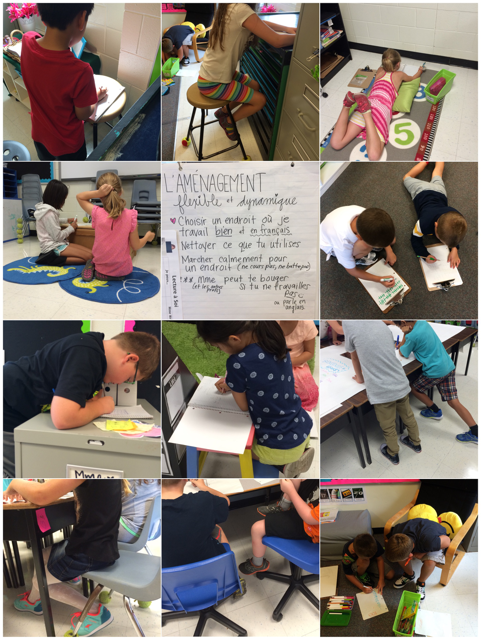 A few years ago, I wanted to implement Genius Hour (aka. Passion Projects) in my room but things kept falling flat - see my post here. I found it difficult for students to research because they lacked the research skills, there were very few books and websites in French, and my student’s reading levels did not match the ones that did exist. Kids were having fun through play, but I felt something was lacking. I have continued to tweak how I approach Passion Projects with each new class. Here is my current process.
A few years ago, I wanted to implement Genius Hour (aka. Passion Projects) in my room but things kept falling flat - see my post here. I found it difficult for students to research because they lacked the research skills, there were very few books and websites in French, and my student’s reading levels did not match the ones that did exist. Kids were having fun through play, but I felt something was lacking. I have continued to tweak how I approach Passion Projects with each new class. Here is my current process.
My Genius Hour is currently maker/STEAM/crafting/coding/exploration time. I would love to include the free inquiry model with driving questions, but as of now it is play-based. Students are engaged, on task and communicating in French spontaneously, but the stuff they are working on is not necessarily connected to a curriculum expectation. It has taken a while, but I have come to accept that it is ok.
At the beginning of every session, we gather as a class and each student decides on what they would like to explore with “Je peux…” statements or “Comment” questions. They can work alone, in pairs or in groups. The goals of our Passion Projects are to 1) Learn Something New, 2) Speak in French and 3) Have Fun. Students are committed to creating/making/experimenting their chosen project for that time period. They are expected to be speaking in French the entire time as they create and collaborate with their peers and they are expected to write about what they learned the next morning in their Passion Project Scrapbooks. Students have created class stores, learned how to code, built homes for their toys, written storybooks, controlled robots, created songs and vlogs and use the green screen - all in French. Keeping consistent evidence of student learning, however has been difficult, but engagement is at a maximum. I still would like to tweak this further. I would also like to incorporate the Four Pillars of Inquiry using Trevor McKenzie’s outline.
Our Library Technician has recently started a Maker Space time in the Library each week, which is an overlap or repeat of what we have already been doing in our class - except the level of French is reduced. If this opportunity continues in the library for my future students, I will need to re-evaluate how this time is spent in my classroom, in an effort to not double-up.
Connection Passion Projects into my Literacy Block
Because the actual Passion Project time itself is "not related" to anything, I felt needed to connect it back into my literacy block. Students maintain their own Passion Project Scrapbooks where they record information, gather ideas and recount what they have worked on. We did heart maps and hopes and dreams lists in our Writer’s notebooks at the beginning of the year, and revisited them again mid-year to help guide our Passion Projects. They listed things they like, can do, want. They also generated questions about food, nature, animals and technology, as well as listing possible project ideas. They keep these lists in their Passion Project Scrapbooks in case they run out of ideas.
Students have the opportunity to share with others in the form of a formal presentation, in conversation opportunities and internally and globally through our kid-friendly class app “Seesaw”. We have also made displays in and out of the class and invited others in to see.
The following outlines the choices my students have during self-selected literacy centres- with Passion Project options woven in. While they do one of the following, I meet with small Guided Reading groups. I have separate times for Conversation/Interaction practice, Writing Workshop and Independent Reading. Word work is woven throughout. Students may not “make” during this time.
Some free resources for you:
- Passion Project lists, questions, ideas
- Passion Project Literacy Brainstorming
- QR codes to French shows to use for Listening
My next steps
- Effectively find away to assess my students throughout the inquiry processes
- Add student goal setting and reflections to Passion Projects
- Transform Passion Projects into Free Inquiry
- Focus more on empathy when creating driving questions and design tasks
- Reach out to the community for my students to find “local experts” - perhaps some skyping?
- Don’t get bogged down with coverage or content (EQAO!!!). Slow down my teaching to allow students to their deepen understanding and allow more time for rich and meaningful reflection.
- Reflect on my teaching practices (And revise as necessary)!















